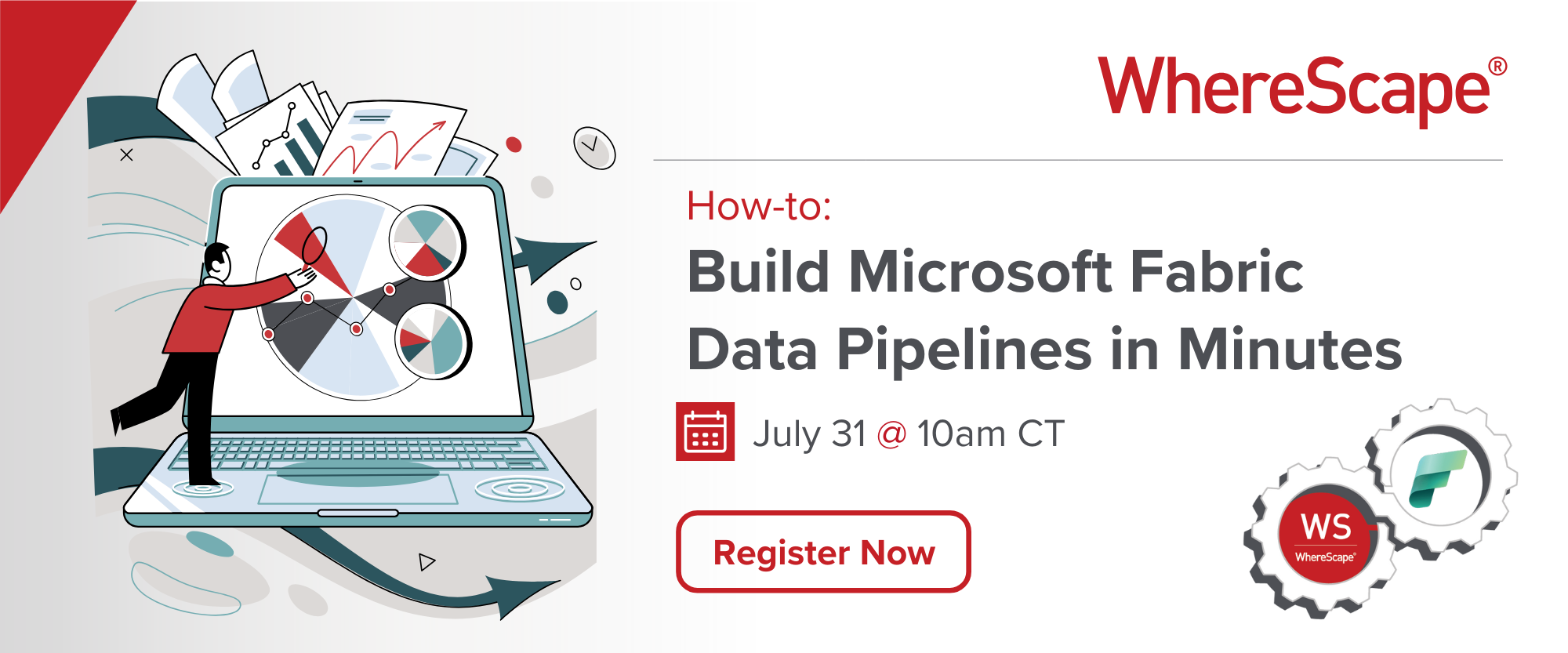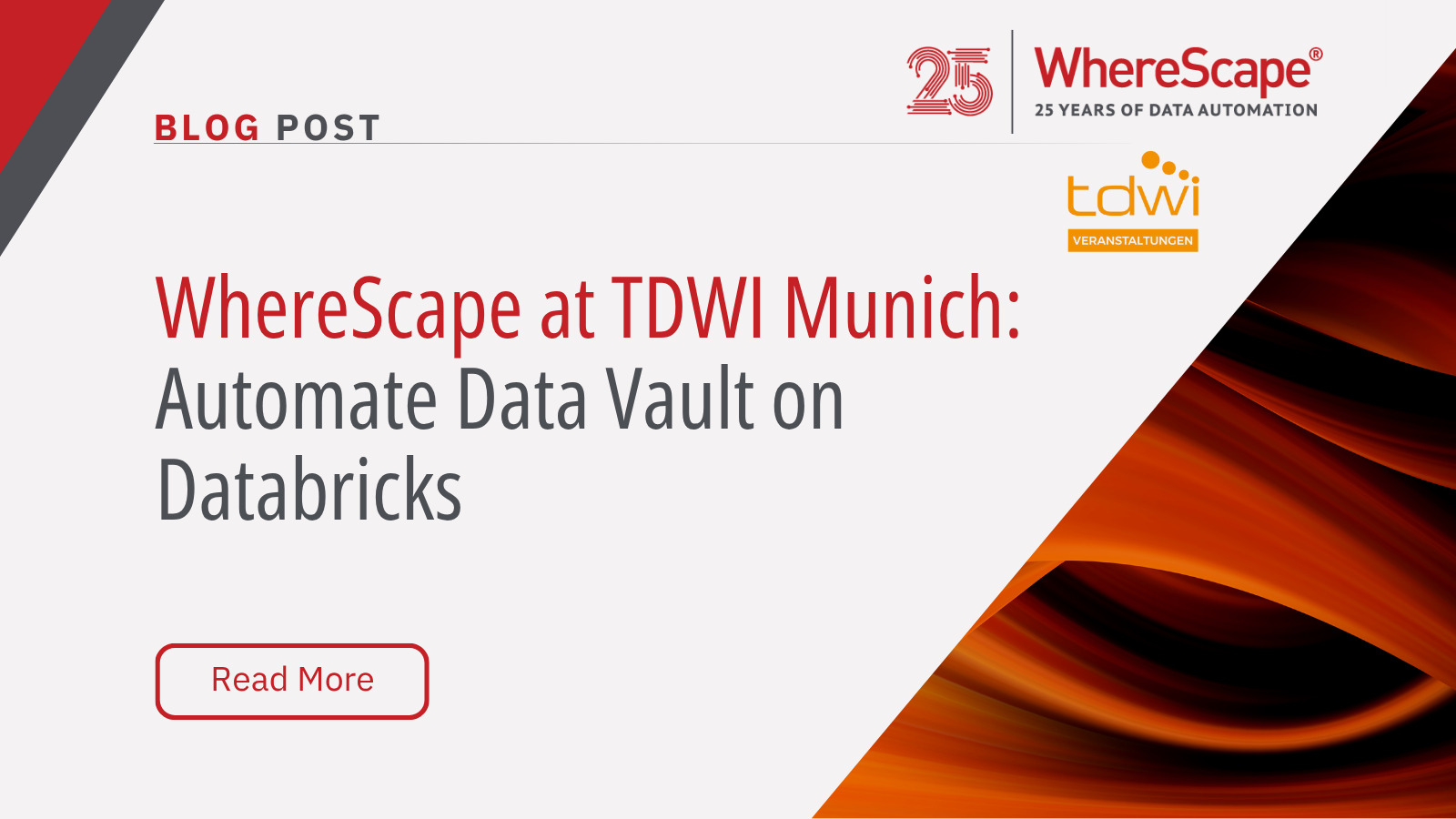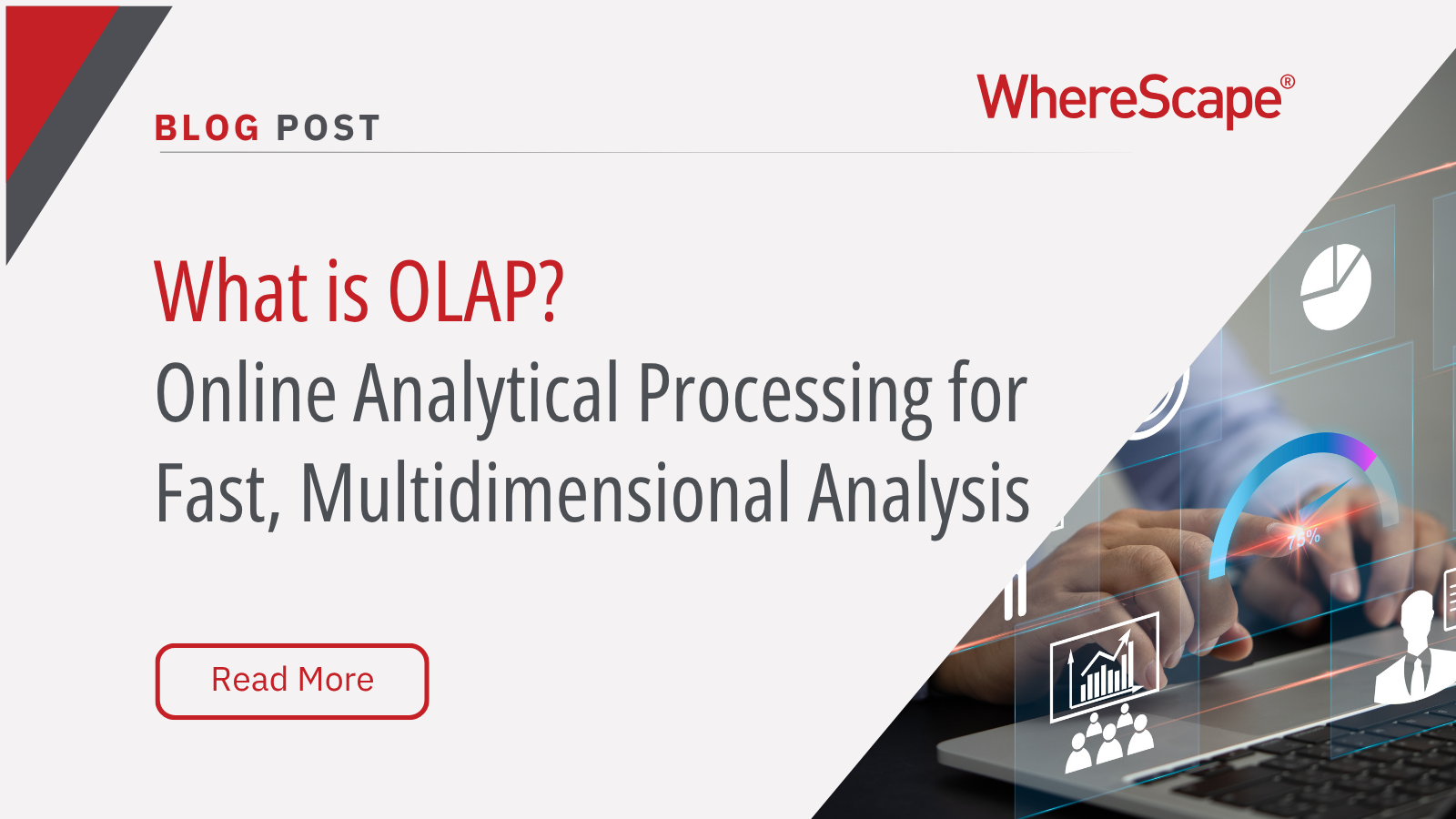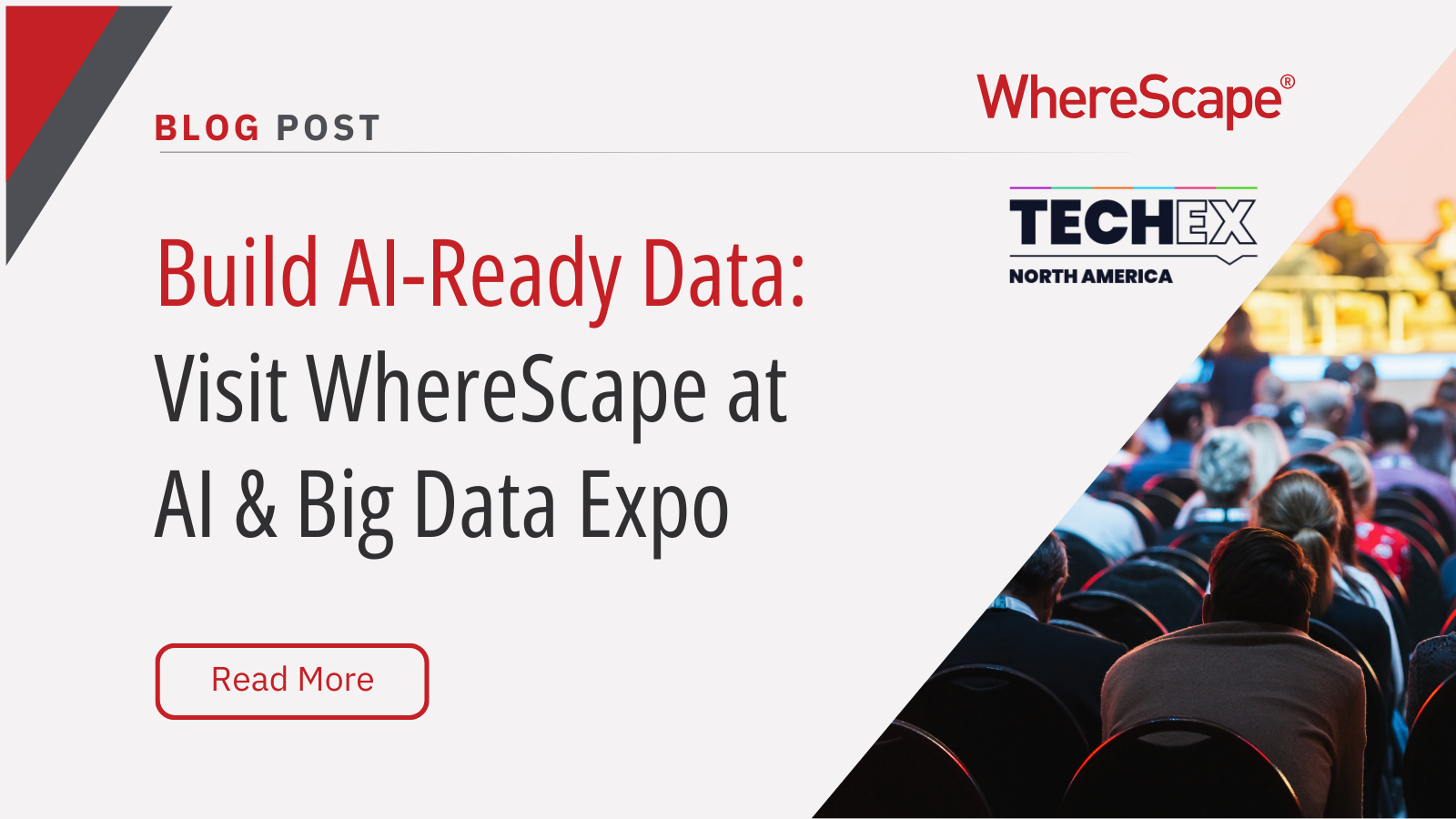Join our fast-and-friendly virtual tour to...
Data Vault 2.0 Auditability
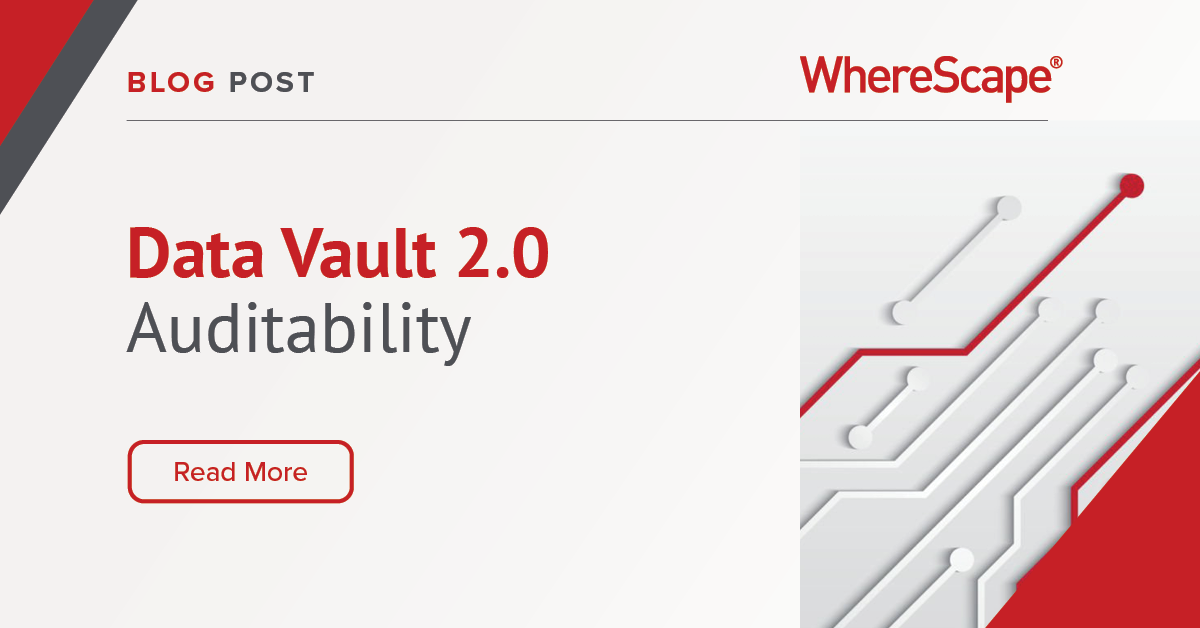
Unlocking the Benefits of Auditability and Adaptability with Data Vault 2.0
Data management has become a crucial aspect of modern businesses as the data volume grows exponentially. Organizations must ensure that the data they collect, store, and use is reliable and trustworthy. Data Vault 2.0 provides a robust data warehousing solution emphasizing auditability and adaptability as key features. In this blog, we’ll explore the importance of these features and how they can help organizations maintain accurate and trustworthy data for decision-making purposes.
Data Vault Auditability
Quote from Lorenz Kindling’s blog: Why Auditability is a Key Benefit of Data Vault
“In a modern data environment, the data runs through various layers. To still provide continuous data quality, it must always be clear where data has come from.” – Lorenz Kindling, Scalefree International.
Auditability in Data Vault refers to the ability to track and reconstruct the transformation of raw data into meaningful information and the application of business rules and calculations that generate insights. Auditability ensures the reliability and trustworthiness of the information used in decision-making processes.
Critical areas of auditability in Data Vault:
- Data model
- Operational process
- Development process
- Security
These four areas combined provide a comprehensive approach to auditability in Data Vault, ensuring that businesses have accurate and trustworthy data for decision-making purposes.
Data Vault Adaptability
Quote from Corné Potgieter’s blog: Why Adaptability is a Key Benefit of Data Vault
“Data Vault 2.0 is that great mid-way between these two extremes. There are many benefits of using Data Vault 2.0, but let’s focus on the adaptability, especially when it comes to new sources and new technologies.” – Corné Potgieter, WhereScape Solutions Architect.
Adaptability in Data Vault refers to its ability to quickly integrate new data sources and adapt to changing technologies. The Data Vault 2.0 architecture enhances de-coupling and ensures low-impact changes, making adding new citations easy and adjusting to new technologies.
Key benefits of adaptability in Data Vault:
Low-impact changes: The insert-only patterns in Data Vault 2.0 minimize the risk of structural integrity issues when adding new data sources or modifying existing ones.
Repeatable patterns: Data Vault 2.0 is built on repeatable ways, which enable automation and make it easier to adapt to new technologies and platforms.
Metadata abstraction: By abstracting your data warehouse metadata from the target technology, Data Vault 2.0 allows you to adapt more quickly to the changing technology landscape.
Scalability: Data Vault 2.0 is designed to handle large volumes of data efficiently, making it possible to scale your data warehouse as your organization grows and generates more data.
Data Vault 2.0
Dan Linstedt, the inventor of Data Vault 2.0, emphasizes the importance of the methodology and its benefits in his webcast “Why Data Vault is Worth the Investment?” He highlights the costs and benefits of implementing Data Vault 2.0 and discusses designing and building a solid Data Vault 2.0 raw vault using best practices and automation.
WhereScape, an automation software for data warehousing and extensive data management, supports Data Vault 2.0 implementations by simplifying and accelerating the development of Data Vault models. With WhereScape automation, businesses can take advantage of Data Vault 2.0’s adaptability and auditability features more efficiently.
Harnessing the Power of Auditability and Adaptability
When auditability and adaptability are effectively combined in a data warehousing solution, organizations can unlock numerous benefits, including:
Data Vault Automation
Enhanced data quality: By ensuring data lineage, Data Vault 2.0 and WhereScape Work Hand-in-Hand
WhereScape, automation software for data warehousing and extensive data management, is an essential tool for implementing Data Vault 2.0. WhereScape enables organizations to design, build, deploy, and operate data infrastructure with automation, streamlining the data warehousing process and reducing the time and effort required.
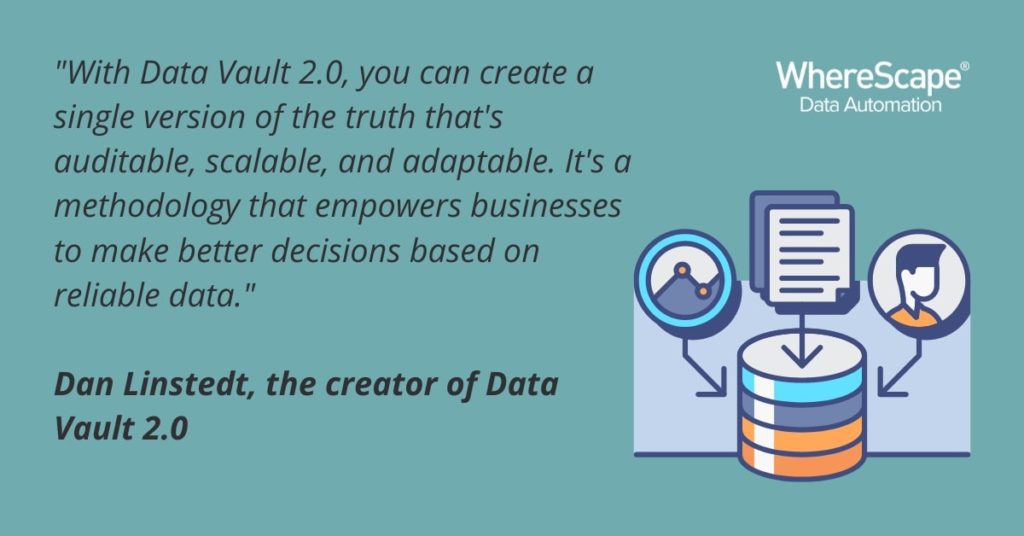
Dan Linstedt, the inventor of Data Vault 2.0, explains in his webcast on investing in Data Vault 2.0 why WhereScape is wise for organizations. Linstedt details the costs and benefits of the Data Vault 2.0 methodology and explains why adopting Data Vault 2.0 can provide benefits now and in the future.
Linstedt also covers the best practices for designing and building a solid Data Vault 2.0 raw vault, highlighting the importance of automation and efficient processes. With WhereScape, organizations can streamline the development process, reduce the risk of errors, and accelerate the time-to-value of their data warehousing solution.
Data Vault 2.0 Implementation
Data Vault 2.0 is a reliable and scalable solution for modern businesses’ data management needs, providing essential features such as auditability and adaptability. By ensuring high-quality, reliable data and enabling efficient adaptation to new data sources and technologies, organizations can make better-informed decisions and remain competitive in a rapidly evolving landscape.
With WhereScape, organizations can streamline the development process, reduce the risk of errors, and accelerate the time-to-value of their data warehousing solution. By investing in Data Vault 2.0 and WhereScape, organizations can unlock the true potential of their data, future-proof their data infrastructure, and stay ahead of the curve in an increasingly data-driven world.
Data Vault Express
WhereScape Data Vault Express removes the complexity inherent in data vault development, allowing you to automate the entire data vault lifecycle to deliver data vault solutions to the business faster, at lower cost and with less risk.
WhereScape at TDWI Munich: Automate Data Vault on Databricks
WhereScape at TDWI Munich 2025: Automate a Full Data Vault on Databricks in Just 45 Minutes June 24–26, 2025 | MOC Munich, Germany As data complexity grows and business demands accelerate, scalable and governed data architectures are no longer optional—they're...
What Is OLAP? Online Analytical Processing for Fast, Multidimensional Analysis
Streamline your data analysis process with OLAP for better business intelligence. Explore the advantages of Online Analytical Processing (OLAP) now! Do you find it challenging to analyze large volumes of data swiftly? A Forrester study reveals that data teams spend...
Build AI-Ready Data: Visit WhereScape at AI & Big Data Expo
June 4–5, 2025 | Booth 202 | Santa Clara Convention Center As organizations scale their artificial intelligence and analytics capabilities, the demand for timely, accurate, governed, and AI-ready data has become a strategic priority. According to Gartner, through...
Automating Star Schemas in Microsoft Fabric: A Webinar Recap
From Data Discovery to Deployment—All in One Workflow According to Gartner, data professionals dedicate more than half of their time, 56%, to operational tasks, leaving only 22% for strategic work that drives innovation. This imbalance is especially apparent when...
What is a Data Model? How Structured Data Drives AI Success
What is a data model? According to the 2020 State of Data Science report by Anaconda, data scientists spend about 45% of their time on data preparation tasks, including cleaning and loading data. Without well-structured data, even the most advanced AI systems can...
ETL vs ELT: What are the Differences?
In working with hundreds of data teams through WhereScape’s automation platform, we’ve seen this debate evolve as businesses modernize their infrastructure. Each method, ETL vs ELT, offers a unique pathway for transferring raw data into a warehouse, where it can be...
Dimensional Modeling for Machine Learning
Kimball’s dimensional modeling continues to play a critical role in machine learning and data science outcomes, as outlined in the Kimball Group’s 10 Essential Rules of Dimensional Modeling, a framework still widely applied in modern data workflows. In a recent...
Automating Data Vault in Databricks | WhereScape Recap
Automating Data Vault in Databricks can reduce time-to-value by up to 70%—and that’s why we hosted a recent WhereScape webinar to show exactly how. At WhereScape, modern data teams shouldn't have to choose between agility and governance. That's why we hosted a live...
WhereScape Recap: Highlights From Big Data & AI World London 2025
Big Data & AI World London 2025 brought together thousands of data and AI professionals at ExCeL London—and WhereScape was right in the middle of the action. With automation taking center stage across the industry, it was no surprise that our booth and sessions...
Why WhereScape is the Leading Solution for Healthcare Data Automation
Optimizing Healthcare Data Management with Automation Healthcare organizations manage vast amounts of medical data across EHR systems, billing platforms, clinical research, and operational analytics. However, healthcare data integration remains a challenge due to...
Related Content
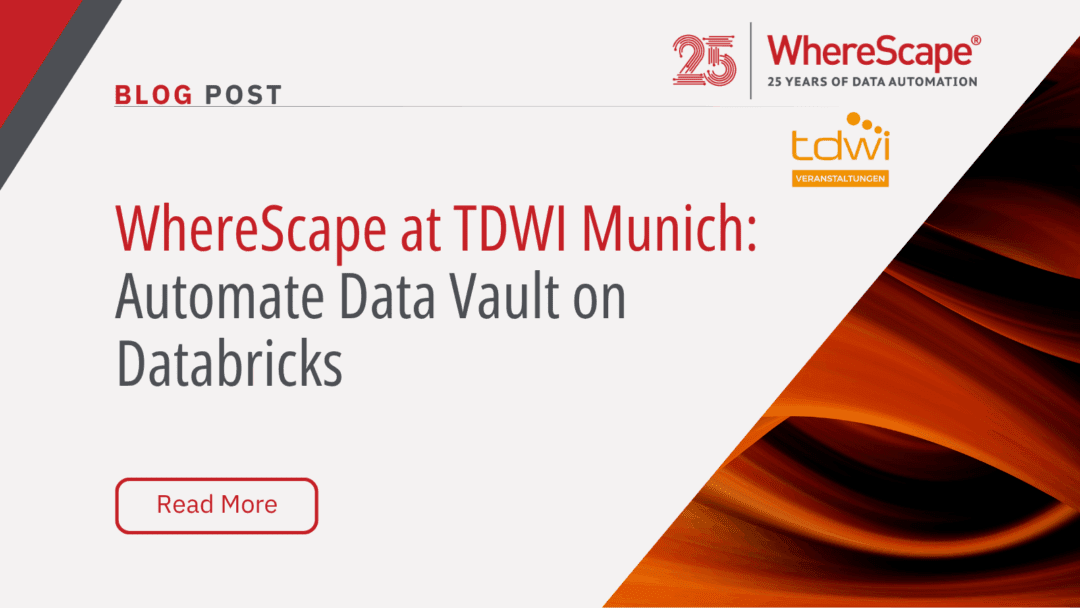
WhereScape at TDWI Munich: Automate Data Vault on Databricks
WhereScape at TDWI Munich 2025: Automate a Full Data Vault on Databricks in Just 45 Minutes June 24–26, 2025 | MOC Munich, Germany As data complexity grows and business demands accelerate, scalable and governed data architectures are no longer optional—they're...
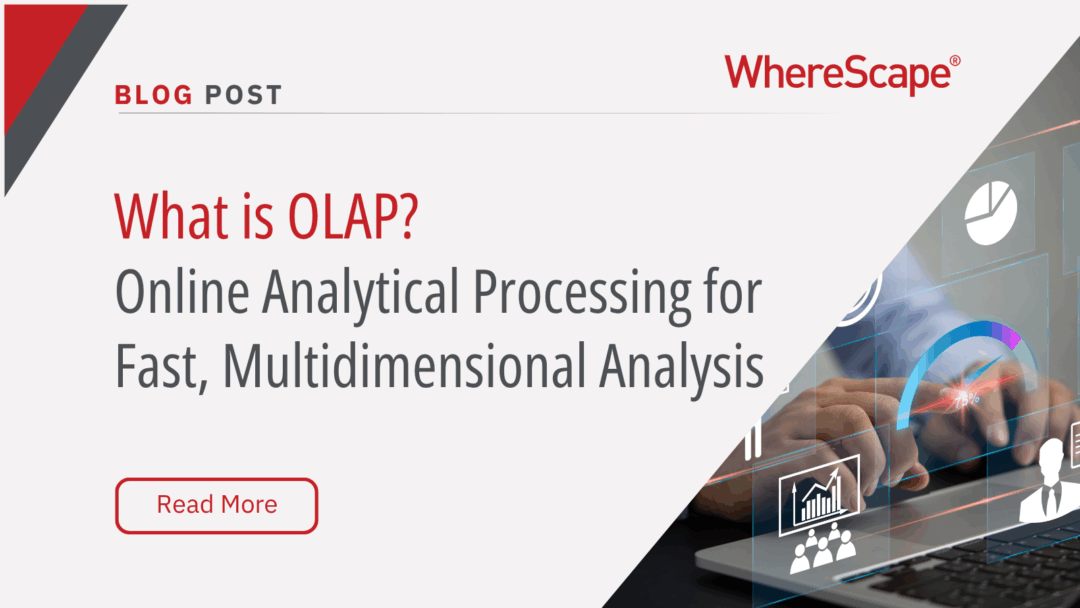
What Is OLAP? Online Analytical Processing for Fast, Multidimensional Analysis
Streamline your data analysis process with OLAP for better business intelligence. Explore the advantages of Online Analytical Processing (OLAP) now! Do you find it challenging to analyze large volumes of data swiftly? A Forrester study reveals that data teams spend...
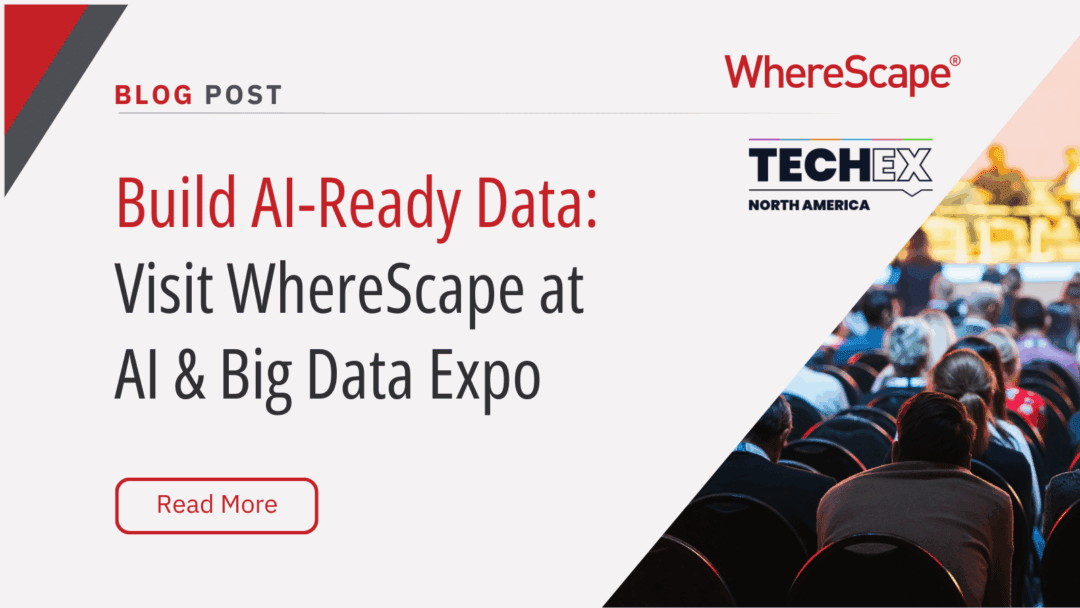
Build AI-Ready Data: Visit WhereScape at AI & Big Data Expo
June 4–5, 2025 | Booth 202 | Santa Clara Convention Center As organizations scale their artificial intelligence and analytics capabilities, the demand for timely, accurate, governed, and AI-ready data has become a strategic priority. According to Gartner, through...
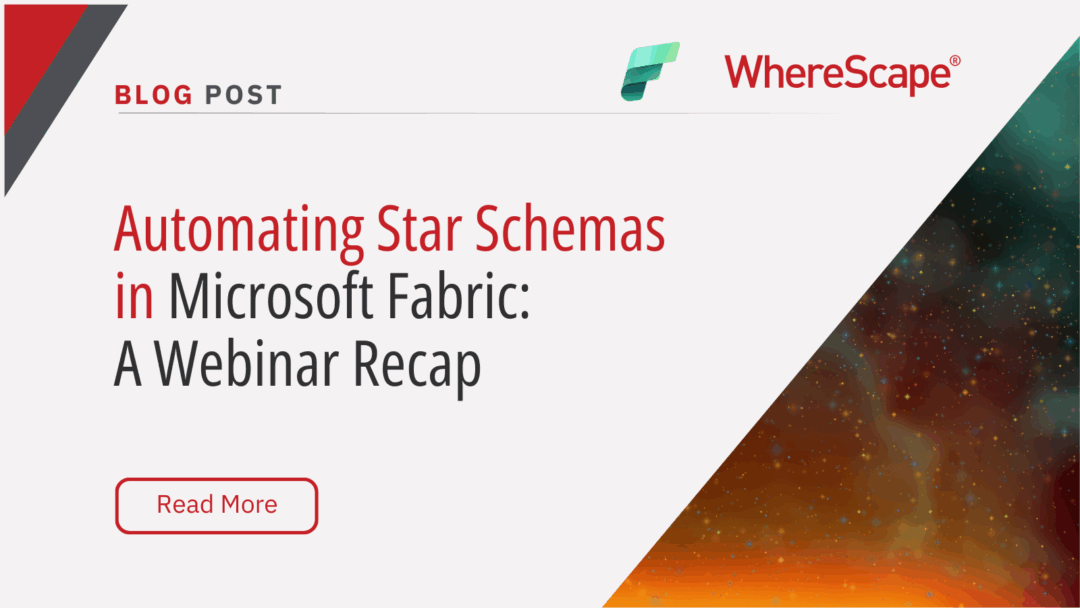
Automating Star Schemas in Microsoft Fabric: A Webinar Recap
From Data Discovery to Deployment—All in One Workflow According to Gartner, data professionals dedicate more than half of their time, 56%, to operational tasks, leaving only 22% for strategic work that drives innovation. This imbalance is especially apparent when...

